Wednesday, March 3 is World Wildlife Day – and Scotland has some of the best.
Scotland is home to hundreds of species that need special protection whether they be beast, bird or bug.
Some are easy to spot while others are well hidden, and many of them rely on human intervention to recreate an environment where wild things can once more survive and thrive.
Forestry and Land Scotland, which manages almost 30 per cent of Scotland’s woodlands is preserving habitats that provide safe haven for many of Scotland’s most iconic wildlife. Some, like the red squirrel, pine marten and capercaillie prefer scots pine forests for food and shelter but more elusive species: dragonflies, beetles and freshwater mussels for example, depend on good management of the many other diverse landscapes that make up the FLS portfolio.
Fortunately Scotland has peatlands, coastal wetlands, alpine climates, lochs and mountains to maintain diversity, even as modern management practices work to overcome the habitat destruction of previous centuries.
Across Scotland private and public land managers are putting in place schemes to remove invasive non-native species, restore ancient woodlands and marshes, and expand and connect woodlands to create better spaces for more species to thrive.
Collaboration is key. Partnership working allows sensitive habitats to be managed in totality even where ownership rests with different organisations. FLS manages 630,000 hectares of woodlands and wild sites but joint management projects allow shared expertise and resources to benefit the wider environment.
Below are 10 of the best that Forestry and Land Scotland is actively supporting.
Capercaillie
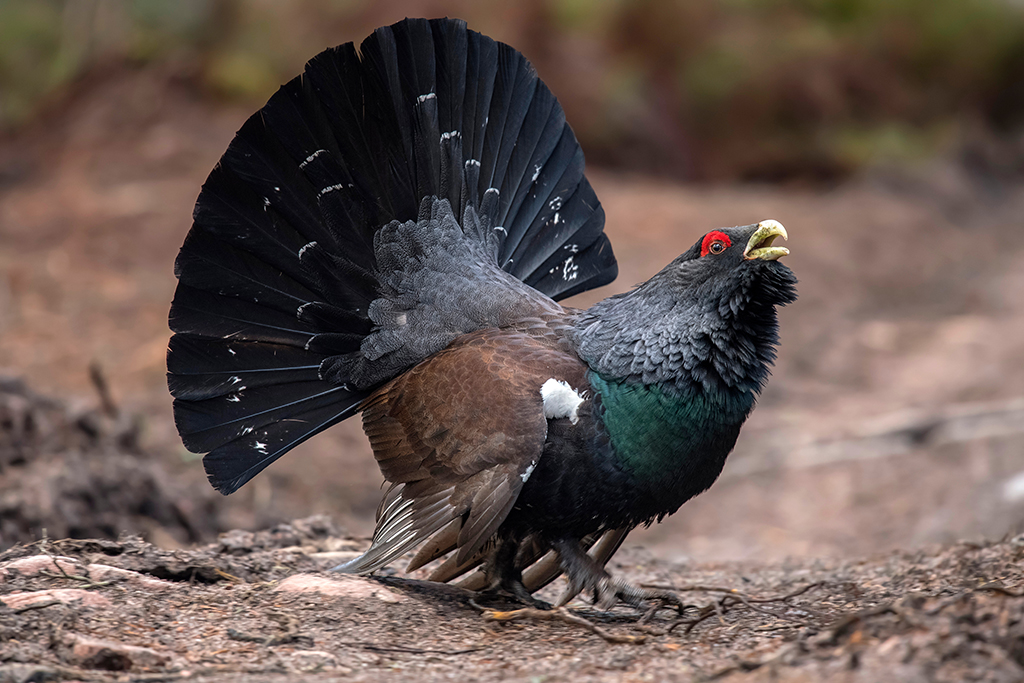
A capercaillie in a forest in the highlands
The largest grouse in the world, measuring between 60-87cms, and one of Scotland’s rarest birds. During mating season the males gather to perform in a lek, dancing and parading to entice female birds. The capercaillie was extinct in Scotland by the 1700s but was reintroduced in the 1800s. There are probably fewer than 1000 capercaillie left in Scotland and forests managed by FLS are among the most important remaining sites. Caledonian pinewoods are great habitats for capercaillie, but they are perfectly happy in plantations that are managed for timber production.
Nevertheless, Capercaillie hens now produce far fewer chicks than they once did. Local factors such as disturbance and predation may have an impact, but evidence suggests that changing weather patterns are the main problem. Cold and rainy periods in June are more frequent and this is when the chicks are small and vulnerable. Climate predictions tell us that Scottish summers will be wetter, but warmer, so there is much uncertainty about how this will affect this amazing bird.
Scottish crossbill
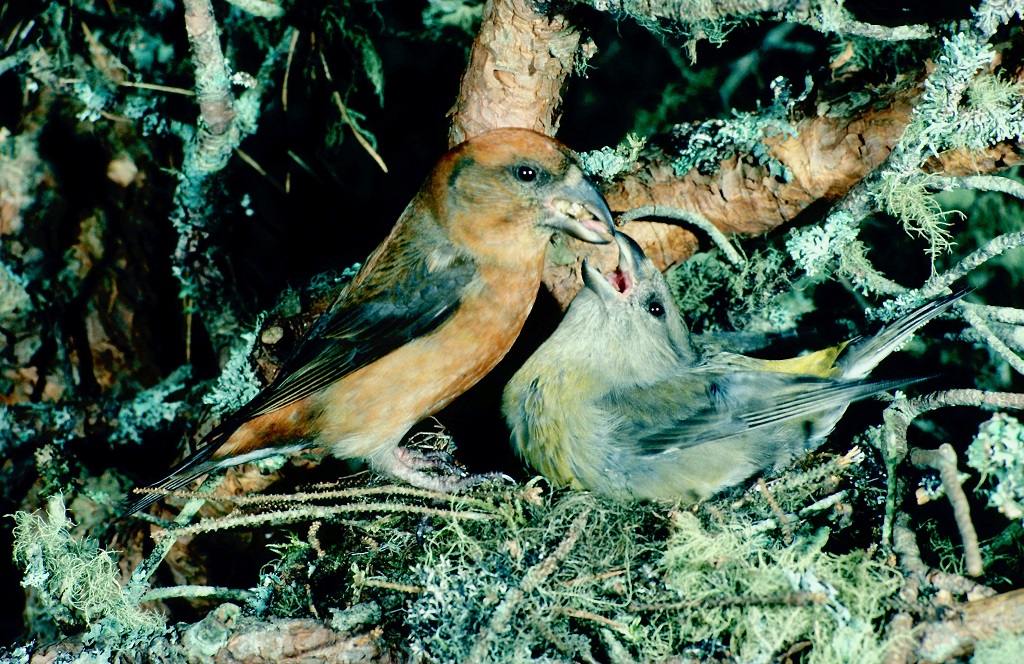
A crossbill (Photo: FLS)
This little finch is Scotland’s only endemic bird species. Typically, it breeds in native Scots pine and can be found in these forests all year round. However, they use a range of conifer species and plantations of non-native conifers are important habitats in years when Scots pine coning is poor. On winter and spring mornings you might see small flocks of crossbills clustering around ripening cones.
The Gaelic name for a crossbill is ‘cam ghob’ (literally ‘squinty beaked’) and it’s this distinctive feature which enables the adult bird to open conifer cones and extract their nutritious seeds. The males are a dark brick-red and some people maintain that the bird’s call has a distinctive Scottish accent! There are crossbills in the pinewoods and conifer forests of Sutherland, Moray, Banff and down into lower Deeside.
Wood ants
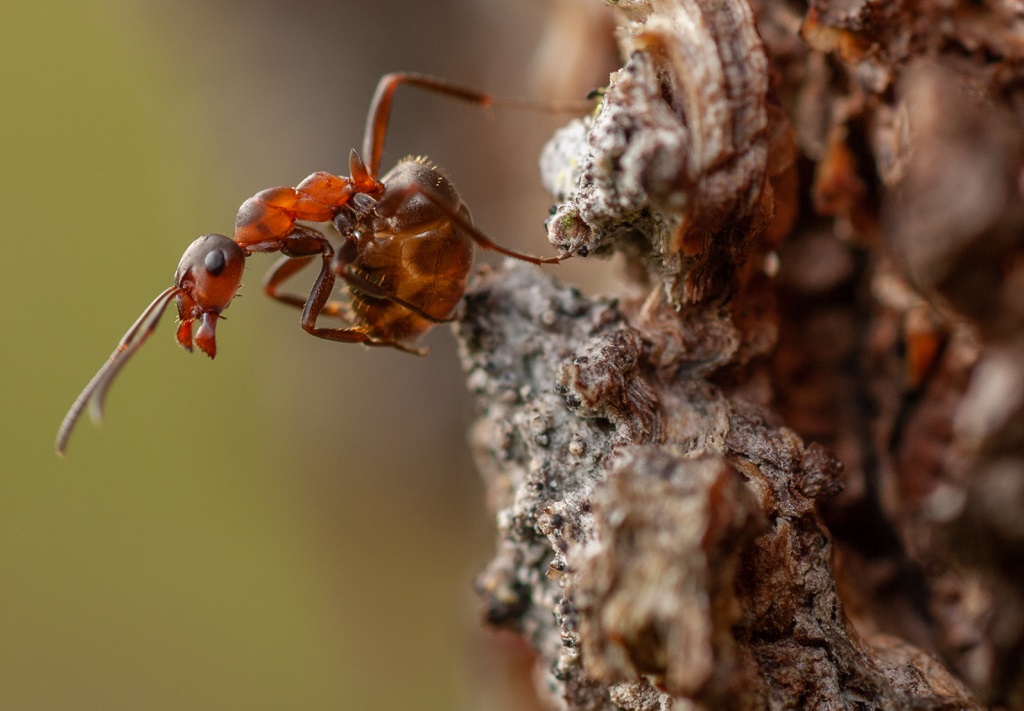
A wood ant (Photo: Colin Leslie)
Scottish wood ants, like others of their species, have a curious relationship with aphids. The ants ‘milk’ aphids for a sweet secretion called ‘honeydew’ – and this can be up to 90 per cent of the ants’ diet. In return, aphids gain protection from predators. In Scottish forests, these little red and black ants can live in 100,000 strong colonies , where they predate upon caterpillars of species such as the sawfly (Neodiprion sertifer) and pine looper moth (Bupalus piniaria) that eat Scots pine needles. Their nests can be more than a metre high and covered in pine needles with one side flatter to expose more surface area to catch the sun. Wood ant nests are also home to worms which are tolerated as they help to keep mould and fungus under control. FLS’s ecologists mapping the spread of wood ant colonies in managed woodlands have discovered that thinning operations allow ants to colonise wider areas and increase the number of nests.
Osprey
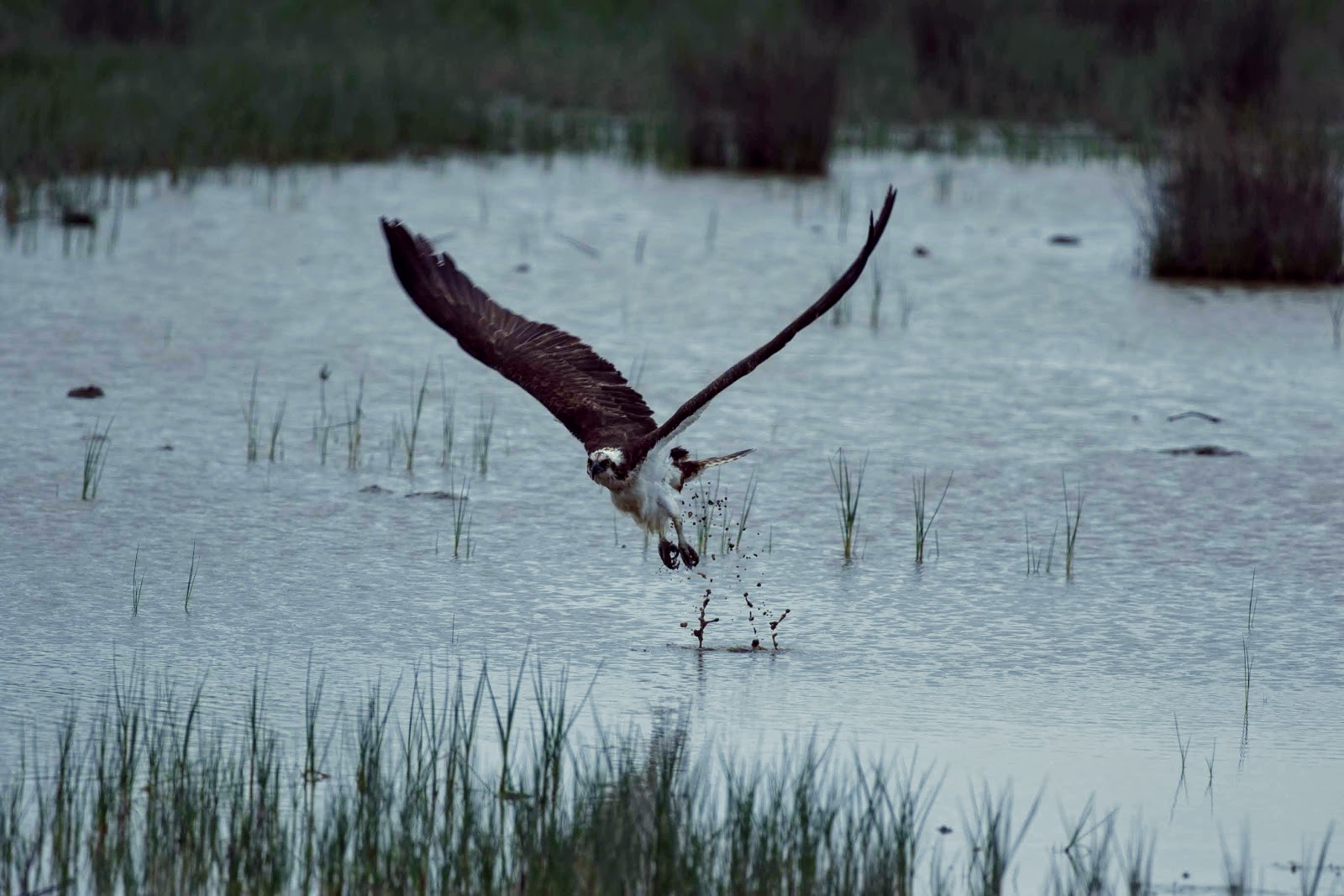
An osprey
The osprey is one of Scotland’s biggest birds. Breeding pairs will return annually to the same nests sometimes flying more than 5000km to do so. Known elsewhere as the ‘fish hawk’, is a clue to how Scotland’s lochs, rivers and estuaries provide a plentiful source of their preferred food. When diving to catch a fish, the osprey can reach speeds of up to 125 km/h.
There’s fossil evidence that ospreys were living in Scotland as the glaciers melted away, some 12,000 years ago. They became extinct in 1916, largely due to egg and skin collectors, but they started breeding here again in 1954.
There has been a steady increase in breeding success in Scotland from two pairs in 1967 to 150 pairs in 2000, and approximately 250 in 2018. Even so, the total population is probably less than 1,500 birds.
Goshawk
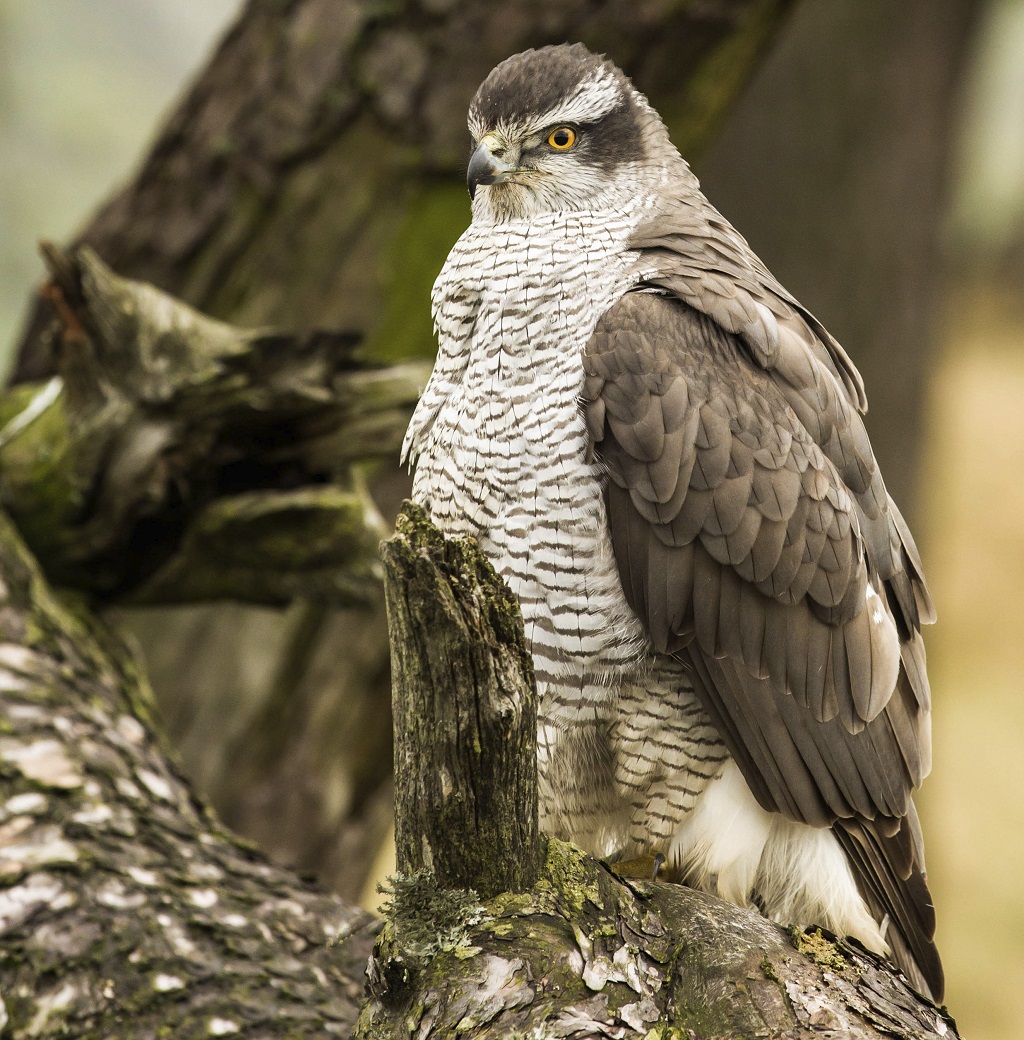
A northern goshawk (Photo: RSPB)
About the size of a buzzard, the goshawk has bright orange eyes and a distinctive white eyebrow. Its broad wings and long tail enable it to hunt at high speed, weaving in and out of trees, and its long legs and talons can catch its prey in flight.
Among the stands of Scots pine, Sitka spruce and larch – including woodlands planted for timber production – goshawks are thriving. FLS takes care to record nest sites, and adjusts felling activities to ensure the goshawks’ safety. In some areas, ‘natural reserves’ are retained especially for goshawks. Where once they were persecuted to extinction, there are now an estimated 100 breeding pairs in Scotland.
Red squirrel
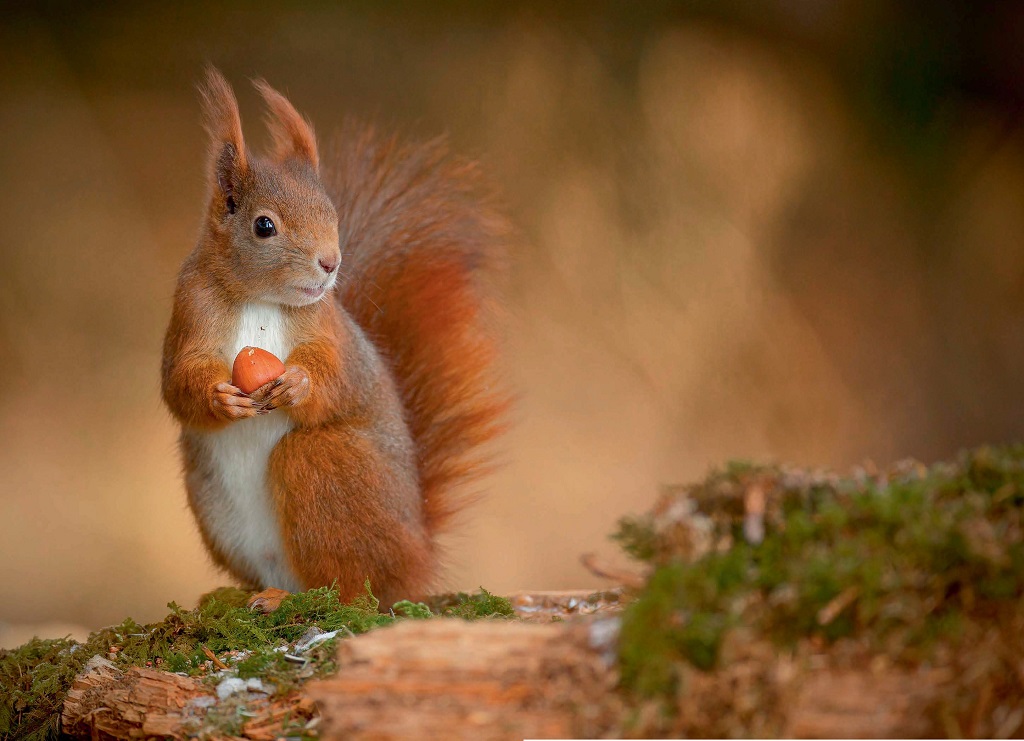
A red squirrel
Little charmers that are a delightful find on any forest walk, red squirrels entertain with their acrobatic skills and tolerance of human proximity. Despite living in some of Scotland’s coldest regions they do not hibernate so they collect as much food as they can through summer and autumn to see them through the cold months. Red squirrels can jump up to eight times the height of their bodies, the equivalent of an adult human jumping over 10m high! One of their greatest threats is from the grey squirrel, a much larger animal with a far more varied diet, which is making determined inroads into traditional red squirrel territory.
Common scoter
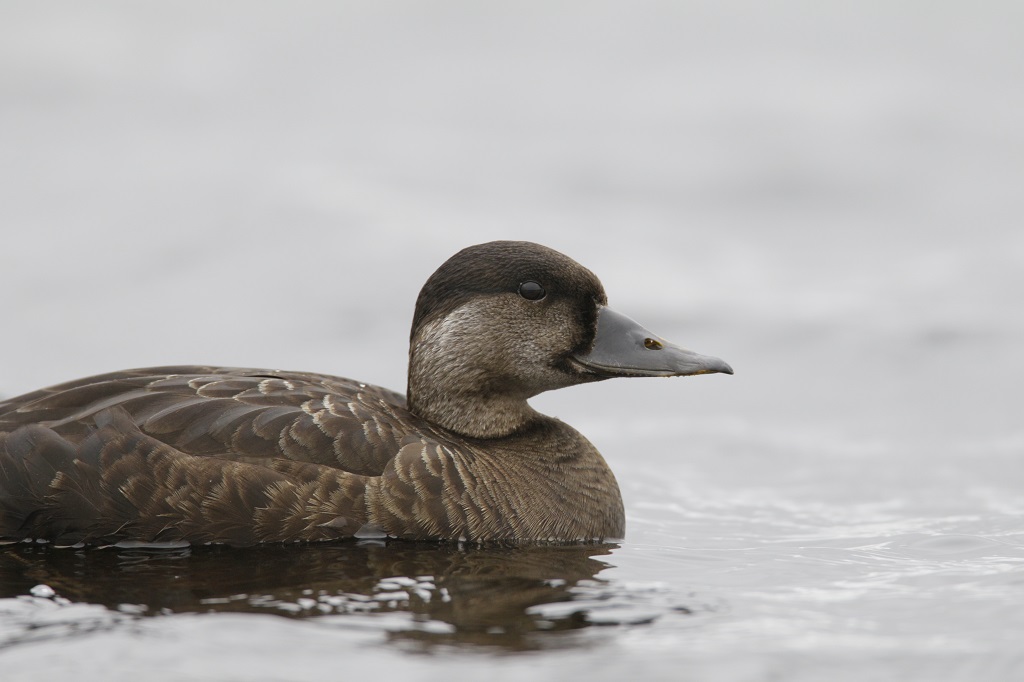
A Common Scoter (Photo: RSPB)
Common by name but actually extremely rare, the Common Scoter breeds on freshwater lochs but they spend a large proportion of their lives at sea, most at home along coastlines and easiest to spot when sea watching. There are around 50 pairs that breed in small lochs in the north-west of Scotland, especially in the flow country of Caithness and Sutherland.
They are among the most vocal of waterfowl. Groups can often be located by the constant mellow, plaintive whistling sound of the males. They dive to feed, and while submerged the wings are partially opened in order to stabilise themselves as they “fly” to search for food on the bottom. A group of scoters is known as a “mooter” or “scooter” of scoters.
Pine hoverfly
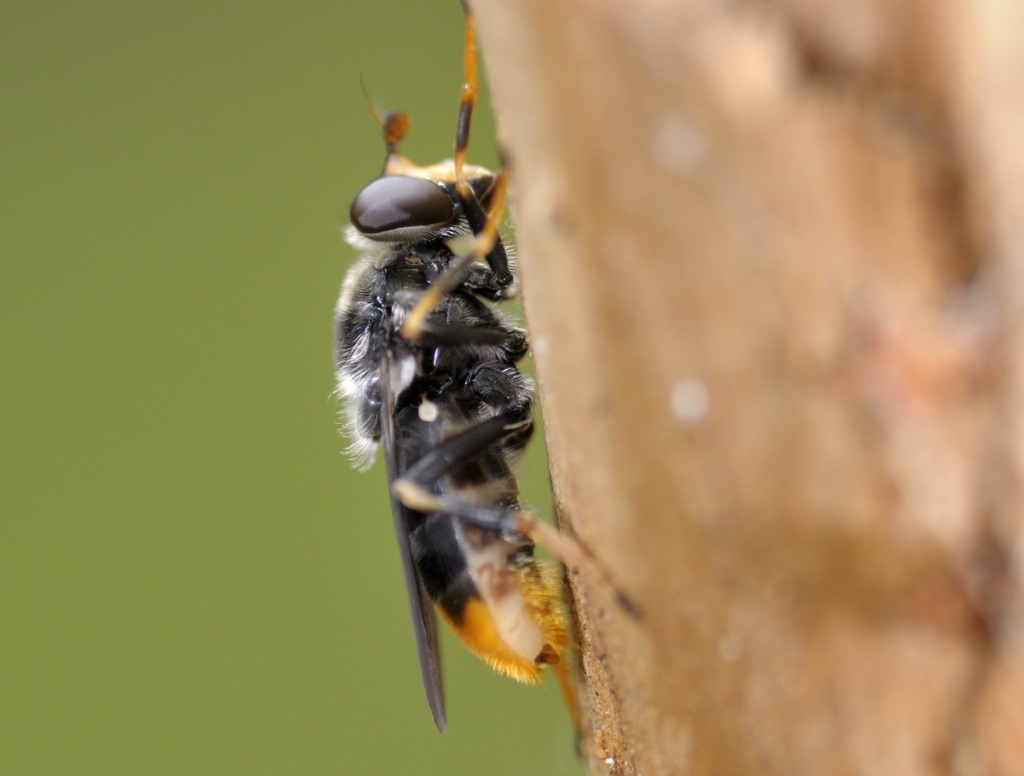
A pine hoverfly (Photo: NatureScot)
The pine hoverfly is one of the rarest species in Scotland. It used to thrive in pinewoods across the country but today can only be found at one or two sites. The main reason for the hoverfly’s decline is a lack of suitable habitat for its larvae, which develop and feed in the water that collects in rot-holes in Scots pine stumps. The trouble is that they prefer stumps that are more than 40cm wide – and there just aren’t enough of this size in Scotland’s forests today. Instead FLS is working with partners to try to create substitute habitats, created by drilling a hole in a pine stump, replacing the sawdust into the hole, adding some extra bark and then adding water. The resultant ‘organic soup’ is proving successful although the hoverfly population is far from being firmly established.
Pine marten
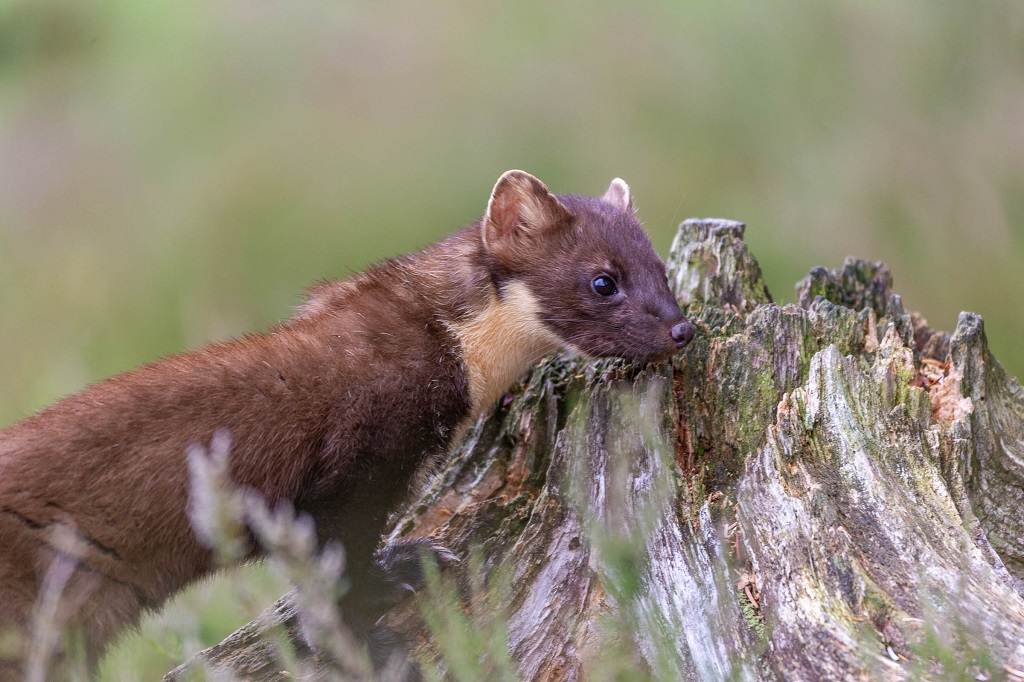
A pinemarten (Photo: Colin Leslie)
A handsome mix of russet brown with a creamy throat bib, the pine marten, though small, is undeniably fierce. And very elusive. They are fast and agile treetop hunters who can leap from tree to tree in pursuit of squirrels, twisting fluidly in mid-air to ensure a safe landing. Pine martens prefer to live alone and range across different sized areas depending on the amount of food available. As the territorial battle between grey and red squirrels unfolds, it is believed that the pine marten is helping to tip the balance for the red, as it finds it easier to catch the heavier, slower greys.
Once nearly extinct in Scotland, pine martens are thought to have benefited from the expansion of forestry although spotting one can still be a tricky business. They’re well camouflaged under the forest canopy but they have a shrill cat-like call which might alert you to their presence.
Freshwater pearl mussel
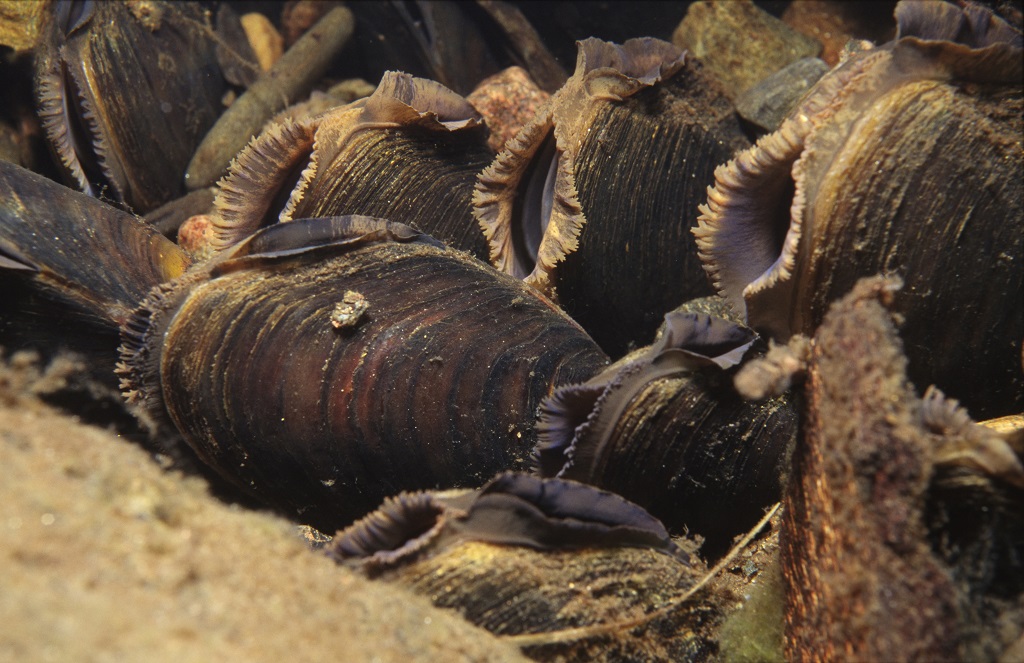
Freshwater pearl mussels (Photo: NatureScot)
A species for which Scotland has an international responsibility and one of the most critically endangered molluscs on the planet. Sedimentation, nutrient enrichment, pollution and even pearl fishing have all combined to threaten this key species but looking after the riparian zone (the narrow strip of trees and vegetation on the banks of watercourses) is one way of protecting their habitat.
Freshwater pearl mussels can filter up to 50 litres of water a day and depend upon migratory Atlantic salmon and trout, and resident brown trout, to support the larval stages of their lifecycle. They latch onto gill filaments of these fish and grow until they detach themselves the following spring. They need to land in clean sand or gravel in order to grow. Freshwater pearl mussels can live to well over 100 years old and are found in fast-flowing, unpolluted rivers and streams. The pearls that some individuals occasionally produce are highly prized and rare – and have contributed to the species’ decline. There are freshwater pearls in the crown of Scotland, which dates from 1540, and is on display in Edinburgh Castle.
TAGS

